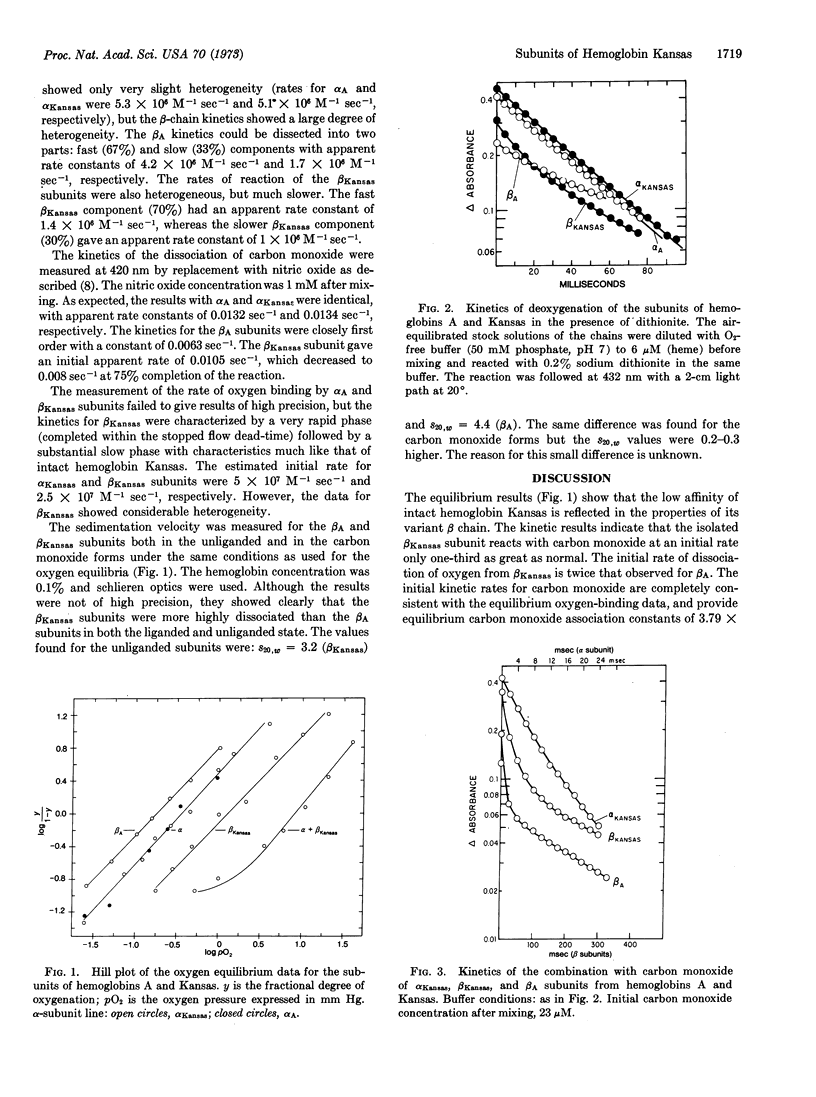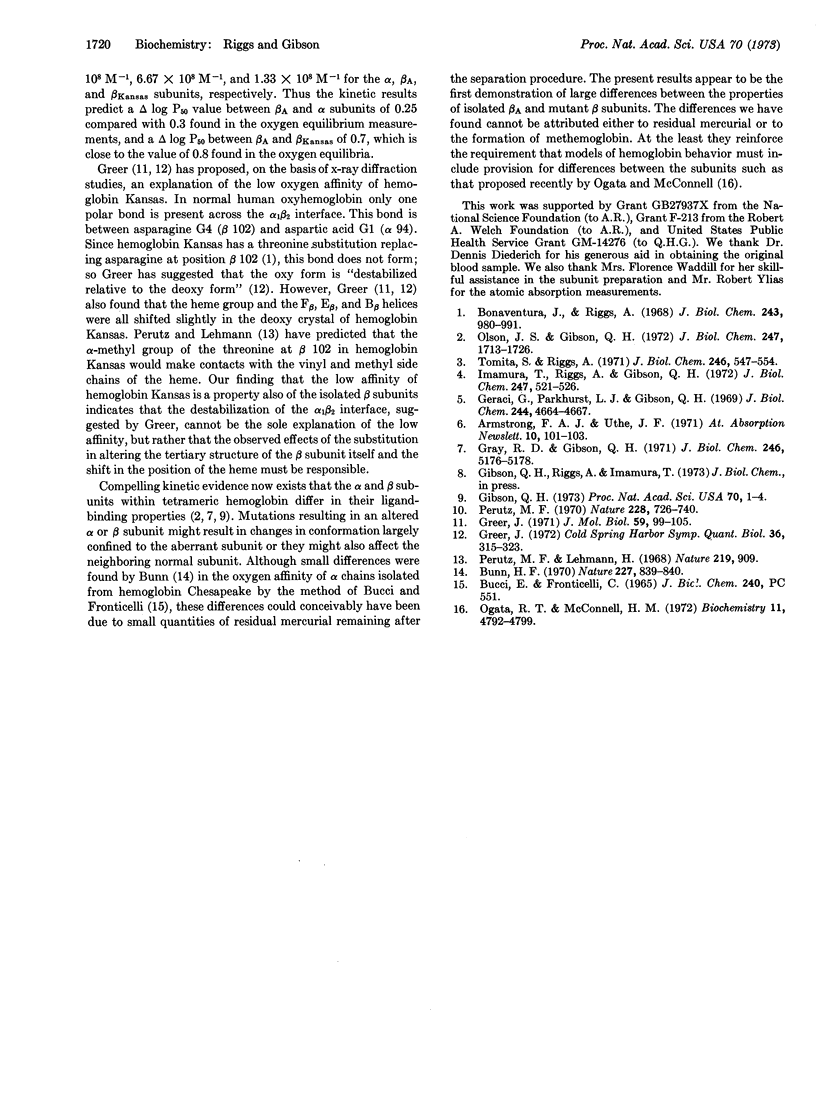Abstract
The isolated β subunit of hemoglobin Kansas has an oxygen affinity that is as low relative to the oxygen affinity of the βA subunit as the affinity of hemoglobin Kansas is low relative to hemoglobin A. Thus the low affinity properties of hemoglobin Kansas are almost completely reflected in the properties of the isolated subunits. The kinetic results show that the equilibrium affinity difference results both from a much larger oxygen dissocation rate constant in βKansas (k = 37 sec-1 and 18 sec-1 for βKansas and βA, respectively) and from a lower association reaction rate, The properties of the α chains from hemoglobins A and Kansas appear to be identical, as expected.
Keywords: hemoglobin A, β chains
Full text
PDF


Selected References
These references are in PubMed. This may not be the complete list of references from this article.
- Bonaventura J., Riggs A. Hemoglobin Kansas, a human hemoglobin with a neutral amino acid substitution and an abnormal oxygen equilibrium. J Biol Chem. 1968 Mar 10;243(5):980–991. [PubMed] [Google Scholar]
- Bunn H. F. Dissociation of haemoglobin Chesapeake into subunits. Nature. 1970 Aug 22;227(5260):839–840. doi: 10.1038/227839a0. [DOI] [PubMed] [Google Scholar]
- Geraci G., Parkhurst L. J., Gibson Q. H. Preparation and properties of alpha- and beta-chains from human hemoglobin. J Biol Chem. 1969 Sep 10;244(17):4664–4667. [PubMed] [Google Scholar]
- Gibson Q. H. The contribution of the alpha and beta chains to the kinetics of oxygen binding to and dissociation from hemoglobin. Proc Natl Acad Sci U S A. 1973 Jan;70(1):1–4. doi: 10.1073/pnas.70.1.1. [DOI] [PMC free article] [PubMed] [Google Scholar]
- Gray R. D., Gibson Q. H. The binding of carbon monoxide to and chains in tetrameric mammalian hemoglobin. J Biol Chem. 1971 Aug 25;246(16):5176–5178. [PubMed] [Google Scholar]
- Greer J. Three-dimensional structure of abnormal human haemoglobins Kansas and Richmond. J Mol Biol. 1971 Jul 14;59(1):99–105. doi: 10.1016/0022-2836(71)90415-3. [DOI] [PubMed] [Google Scholar]
- Greer J. Three-dimensional structure of abnormal mutant human hemoglobins. Cold Spring Harb Symp Quant Biol. 1972;36:315–323. doi: 10.1101/sqb.1972.036.01.042. [DOI] [PubMed] [Google Scholar]
- Imamura T., Riggs A. Equilibria and kinetics of ligand binding by leghemoglobin from soybean root nodules. J Biol Chem. 1972 Jan 25;247(2):521–526. [PubMed] [Google Scholar]
- Ogata R. T., McConnell H. M. States of hemoglobin in solution. Biochemistry. 1972 Dec 5;11(25):4792–4799. doi: 10.1021/bi00775a024. [DOI] [PubMed] [Google Scholar]
- Olson J. S., Gibson Q. H. The reaction of n-butyl isocyanide with human hemoglobin. II. The ligand-binding properties of the and chains within deoxyhemoglobin. J Biol Chem. 1972 Mar 25;247(6):1713–1726. [PubMed] [Google Scholar]
- Perutz M. F., Lehmann H. Molecular pathology of human haemoglobin. Nature. 1968 Aug 31;219(5157):902–909. doi: 10.1038/219902a0. [DOI] [PubMed] [Google Scholar]
- Perutz M. F. Stereochemistry of cooperative effects in haemoglobin. Nature. 1970 Nov 21;228(5273):726–739. doi: 10.1038/228726a0. [DOI] [PubMed] [Google Scholar]
- Tomita S., Riggs A. Studies of the interaction of 2,3-diphosphoglycerate and carbon dioxide with hemoglobins from mouse, man, and elephant. J Biol Chem. 1971 Feb 10;246(3):547–554. [PubMed] [Google Scholar]


